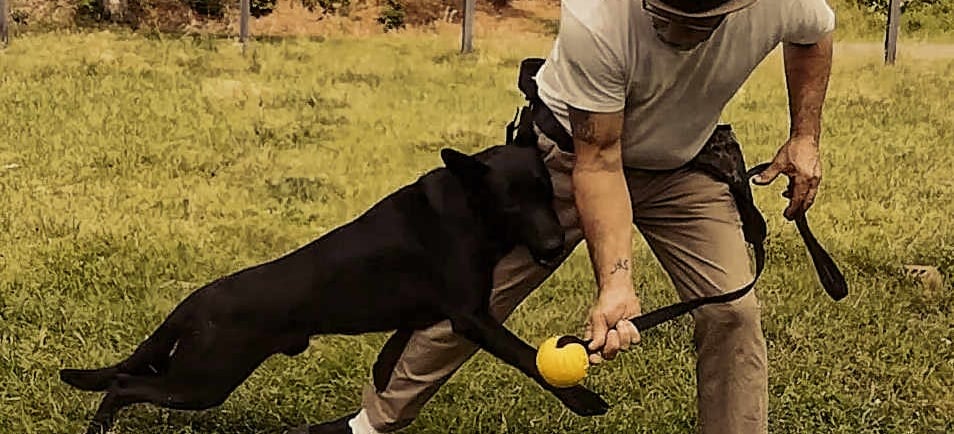NEW TSHIRTS AND K9 DRAGON FACTORY BRAND CLOTHING
Learning How To Learn
How does the dog actually learn?
K9 TRAINING
B Anderson
5/29/20233 min read


The process of a dog learning involves several stages and factors that contribute to its ability to acquire new knowledge and skills. Here's a detailed explanation of the learning process in dogs:
1. Sensory Perception: Dogs gather information from their environment through their senses, including sight, hearing, smell, taste, and touch. They use these senses to observe and interpret stimuli in their surroundings, which forms the basis for learning.
2. Conditioning: Conditioning is a fundamental learning process in dogs. It involves associating a specific stimulus with a particular response. There are two types of conditioning:
- Classical Conditioning: In classical conditioning, a neutral stimulus is paired with a biologically significant stimulus to elicit a reflexive response. For example, a dog may learn to associate the sound of a clicker (neutral stimulus) with receiving a treat (biologically significant stimulus). Over time, the clicker alone will elicit the desired response, such as sitting or staying.
- Operant Conditioning: Operant conditioning involves learning through consequences. Dogs learn to associate their behavior with certain outcomes. When a behavior is followed by a reward or reinforcement, the dog is more likely to repeat that behavior. Conversely, if a behavior leads to an unpleasant consequence or punishment, the dog is less likely to repeat it.
3. Observational Learning: Dogs are social animals and can learn by observing and imitating the behaviors of other dogs or humans. This type of learning is often referred to as social learning or modeling. For example, a dog may learn to sit when it sees another dog being rewarded for sitting.
4. Habituation: Dogs can become habituated to repeated exposure to certain stimuli. Habituation occurs when a dog becomes accustomed to a particular stimulus and no longer responds to it. For example, a dog may initially bark at the sound of a vacuum cleaner, but over time, with repeated exposure, it may become habituated to the sound and no longer react.
5. Problem Solving: Dogs have the ability to solve problems and learn through trial and error. They can analyze a situation, explore different options, and learn from the consequences of their actions. Problem-solving abilities can vary among individual dogs and can be influenced by their breed, genetics, and prior learning experiences.
6. Reinforcement: Reinforcement plays a crucial role in the learning process. It involves providing rewards or positive consequences for desired behaviors, which increases the likelihood of those behaviors being repeated. Common forms of reinforcement in dog training include treats, praise, toys, or other rewards that the dog finds motivating.
7. Punishment: While punishment can be used as a deterrent for unwanted behaviors, its use in dog training should be approached with caution. Harsh or aversive punishments can have negative consequences and may lead to fear, anxiety, or aggression in dogs. Positive reinforcement-based training methods are generally considered more effective and humane.
8. Generalization and Discrimination: Once a dog has learned a behavior in a specific context, it can generalize that behavior to similar situations. Generalization involves applying a learned behavior to different contexts or environments. On the other hand, discrimination refers to the ability to differentiate between different stimuli and respond appropriately to each.
9. Time and Repetition: Learning in dogs requires time and repetition. Dogs need consistent training sessions and reinforcement to solidify their understanding of desired behaviors. Short, frequent training sessions are often more effective than long, infrequent ones.
10. Consistency and Clear Communication: Clear communication and consistency are vital for effective learning in dogs. Using consistent cues, commands, and rewards helps the dog understand what is expected of them. Training methods should be clear, concise, and easy for the dog to understand.
It's important to note that individual dogs may vary in their learning abilities and preferences.
All Dogs are individuals and learn at different paces and in different ways.
If you liked this or learned from it why not share it on your favorite social media? SHARE


